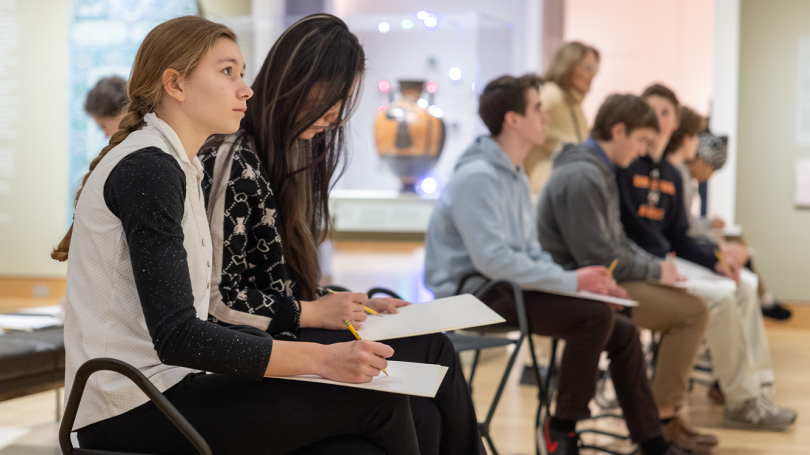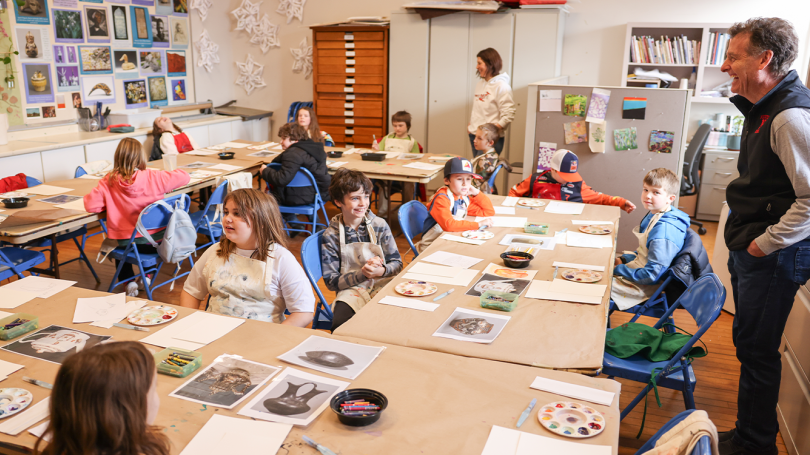ERIC WALKER, fourth-grade educator at the Newton School, Strafford, VT, and collaborator and participant in the Hood Museum's Images program since 2012
Hood Quarterly, Fall 2024
As a former professional artist as well as an elementary educator, I have a real awareness of how important it is for students to be exposed to art of all types that stimulates understanding and appreciation of cultures and opinions that are different from their own experiences. The Images program at the Hood Museum, and the art that is available for students to see there, promotes deeper thinking about the connections between the physical work of art and the message the artist is communicating. Students can experience issues that may be outside the scope of what they would normally think about. In addition, the opportunity for students to make their own artwork really helps them feel invested in the works we are studying and gives their creativity an outlet. Since most students love to make art, this program uses that predisposition to encourage students' observation, discussion, and curiosity about the world around them.
JENNY BLUE, head of the English Department, Kimball Union Academy
Collaborating with the educators at the Hood Museum has been one of the highlights of my teaching career in the Upper Valley. I first had the opportunity to work with the museum when I was teaching a unit on A Raisin in the Sun to ninth-grade students. I had heard that an exhibition titled Witness was traveling from the Brooklyn Museum to Hanover, and I was intrigued by the possible connections between its visual artifacts of activism and the literary activism so beautifully dramatized in Hansberry's play. The museum docents introduced the students to a way of seeing art that made each work in the exhibition accessible: students were allowed to have all kinds of reactions to the art—they could like it or dislike it, find it moving or confusing, make connections not only to our literature but also to their own lives. In short, these professionals gave the students permission to have all sorts of feelings about art.
Later, Hood Museum Educator Vivian Ladd helped me expand the curriculum for my class on the world's religions. I took students to the museum to see sacred objects from all over the world and asked them to consider how the objects manifested the divine. I'll never forget when, during the COVID-19 lockdown, I feared that students would miss the opportunity to deepen their understanding of culture through these sacred objects. I reached out to Vivian, and she told me not to worry: she planned a virtual field trip for my students, bringing the wonder of Mateo Romero's Dartmouth Pow-Wow paintings to life in a Zoom call that had everyone participating. The Hood Museum has been a wellspring of inspiration for me over the years, and I look forward to many future collaborations with its creative and caring team of educators. Thank you for all that you do.

